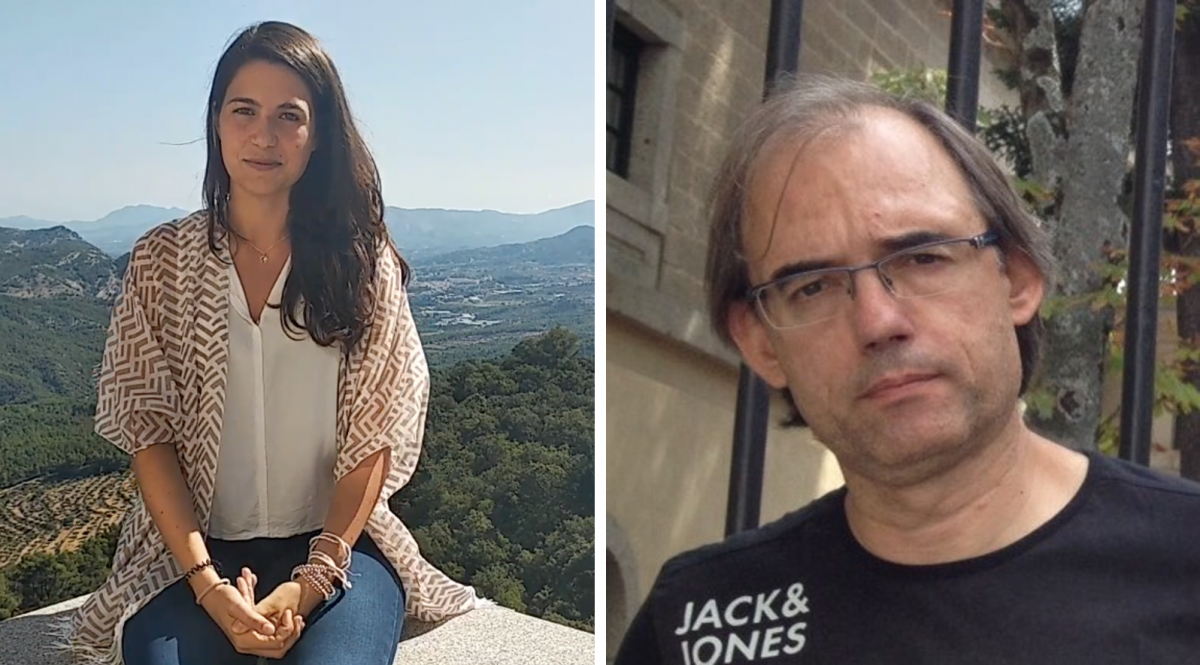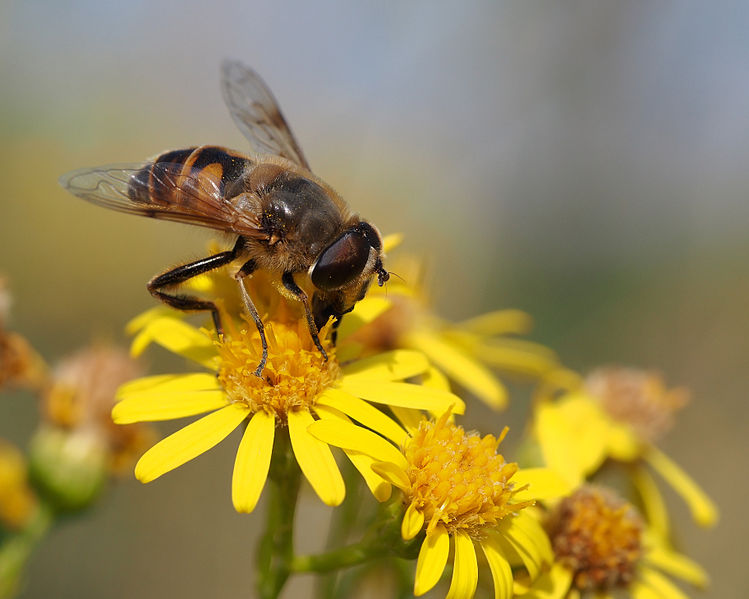Meet the Hoverfly Experts: Santos Rojo and Andrea Aracil
This is the third in a series of interviews with Hoverfly Experts involved in IUCN’s European Red List (ERL) of Hoverflies. The project aims to assess the extinction risk of hoverfly species across Europe, and will contribute to guiding decisions and conservation action for these species at the European level.

Photo: Andrea Aracil and Santos Rojo
Santos Rojo and Andrea Aracil are on a hoverfly assessment team with Celeste Perez. They are working hard to better understand the extinction risk to Europe’s hoverfly species. Santos and Andrea are at different stages in their career and provide great insight for those who may consider a career in entomology and academia and how these professions contribute towards nature conservation.
First, an introduction. We asked Santos and Andrea to explain what their jobs focus on.
Santos: “I am professor at University of Alicante (Spain), currently Head of Department of Environmental Sciences and Natural Resources. My research is focused on the biology and ecology of dipteran flies: from studies on biodiversity to analyse the roles played by flies in natural and non-natural ecosystems until how they interact with other organisms.”
Andrea: “I am doing my PhD thesis on the pre-imaginal stages (mainly larvae) of hoverflies, focusing on morphology, biology, functional morphology and development… I have also been involved in applied approaches related to mass production of some species of hoverfly for pollination research.”
Research to better understand insects like hoverflies is incredibly important. Hoverflies and other pollinators are the life-blood of our environment, helping plants to reproduce through pollination. Some species feed on ‘pests’ such as aphids during their larval stages and some feed on decaying material, helping this extremely important process of returning nutrients and energy from dead materials to the living ecosystem. Hoverflies are important for our environment at every stage of their life cycle and better understanding them increases our ability to protect them and their habitats at each stage of their life. Andrea sums this up perfectly, “The more information we have, the better the decisions that can be made to conserve them. This is not only applicable to hoverflies but to all the species in the planet.”
Many people would consider hoverflies an unusual field of expertise to undertake but Santos has been fascinated by these incredible creatures since he was young, “My interest in flies started when I was a child and came into contact with the “rat-tailed” larvae of Eristalis tenax, the common dronefly. I observed the pupae of this hoverfly in a building close to a cow-farm. With time, I discovered that the adults that emerged from these pupae were incredibly “bee-like”…but they did not sting… and were not “real” bees.” Childhood experiences with nature can often create a lasting impression that lasts a lifetime and can spark a curiosity that turns into career! Alongside important experiences in nature, it is important to have people that inspire us and introduce us to new passions. Andrea first encountered her interest in hoverflies at University, “When I finished my degree and I started the collaboration with my current research team at the university. They shared with me their passion of hoverflies and the showed me all the interesting facts and roles that this family have.”
 Photo: Eristalis tenax © Francis C. Franklin/CC-BY-SA-3.0 (Wikimedia Commons)
Photo: Eristalis tenax © Francis C. Franklin/CC-BY-SA-3.0 (Wikimedia Commons)
The enthusiasm and knowledge of researchers like Santos and Andrea is key to rallying the citizens of Europe into helping conserve nature and halting the decline of pollinators like hoverflies. The biodiversity crisis the planet is facing is a big challenge and one we all need to participate in tackling. Both Andrea and Santos had this advice for the citizens of Europe:
Andrea: “The main threats affecting the surviving of hoverflies are related with the quality of the habitat in which they are found. For this reason, the best way in which European citizens can help to protect hoverflies is being respectful with the natural areas they visit and trying to live in the most sustainable way to reduce the anthropic pressure to the habitats hosting these species.”
Santos: “Because many species are easily visible in urban areas or close to cities and gardens, the individual action of people in families, schools etc could be very significant.”
We can all help hoverflies when out in the countryside, in our gardens and even in the green areas lining our cities. The more we all work together, the better for the hoverflies and the healthier our hoverflies are, the healthier the environment, on which humans rely, is.
